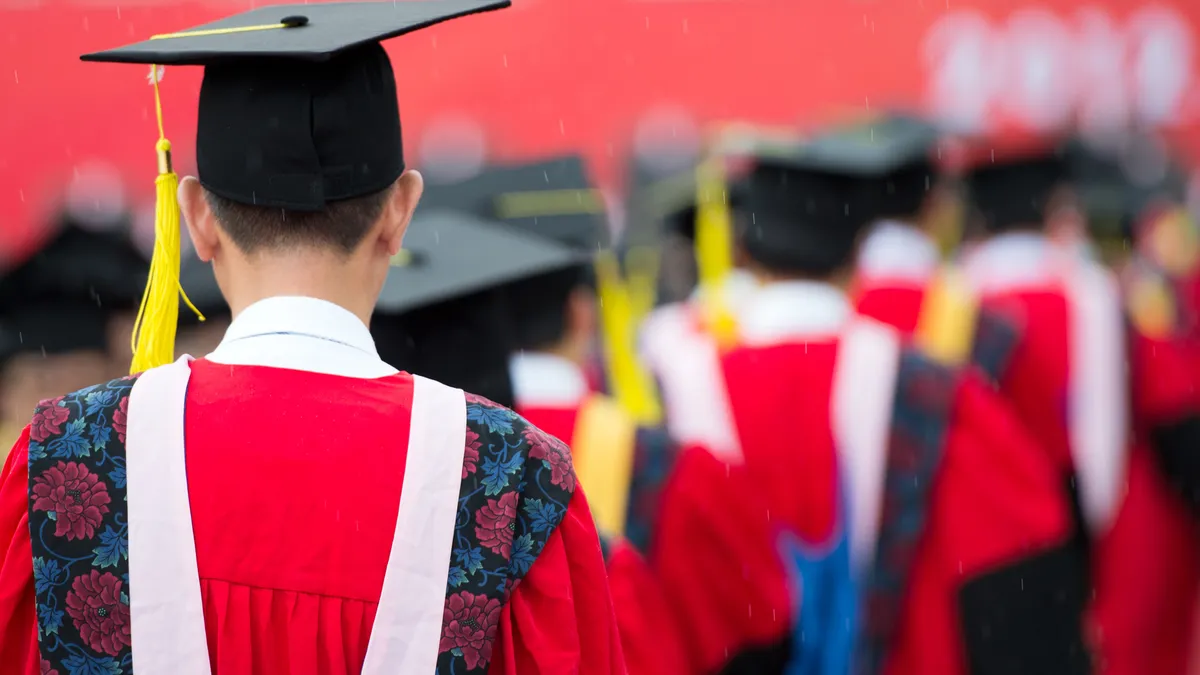Dive Brief:
- Decreases or low growth in tuition revenue was a key cause of declining revenue overall at public and private colleges in 2018, Moody's Investors Service said in a pair of reports on higher ed finances. At public institutions the situation was compounded by lagging state support, while private colleges struggled to curtail expenses.
- Revenue growth was below 3% at more than half of public colleges, with the median value falling to 2.4% from 2.9% a year ago. Private colleges' median revenue growth held steady at 2.4% year-over-year, though it trailed a median 2.9% increase in expenses for the third-straight year.
- Larger institutions outperformed their peers in both sectors as the combination of declining enrollment, slow recovery of public funding and rising tuition stressed revenue.
Dive Insight:
The findings boost the prognosis of a March report from Moody's that said higher ed enrollment would decline through the fall of 2027. At the time, the agency cited data from the National Center for Education Statistics, which said the number of high school graduates would rise just 0.2% in the next nine years, compared to 6% during the previous nine years.
In response, colleges are trying to stem tuition increases that could push price-sensitive students away. That move is partly to blame for revenue decreases at public and private colleges, according to Moody's.
The situation may be improving. In 2018, 45% of public colleges reported a 3% or greater increase in net tuition per student, while just 20% of colleges said net tuition revenue declined. That's compared to 27% who said the same a year ago.
Public universities are responding to state funding cuts and declining enrollment by raising tuition. According to a June report from the Pew Charitable Trusts, their tuition increased by 43% per student from 2008 to 2018. Meanwhile, state support of higher education was 13% below its 2008 levels per student in 2018.
Amid the price sensitivity, private colleges have taken to tuition discounting to stave off enrollment declines. Tuition discounts at private nonprofit colleges are poised to reach a record high of 52.2% in the 2018-19 academic year, according to data from the National Association of College and University Business Officers (NACUBO).
That's up from 50.5% in 2017-18, though the discounts likely contributed to an inflation-adjusted 3.6% decrease in revenue from new freshmen that year, according to NACUBO.
Around one-third of private colleges saw their net revenue decline in 2018 compared to 15% who said so in 2014, Moody's reported.
Looking at the public and private markets by size and region, Moody's noted that smaller colleges and institutions in the Midwest face strong revenue pressure from shrinking enrollment and limits on market acceptance of tuition increases. In its March report, Moody's credited a 2% decline in high school graduates for the challenging market in the Midwest.
As they face tuition revenue pressure, public and private colleges will be looking for funds to invest in needed capital improvements. Public colleges are taking on more debt to finance "competitive facilities," Moody's analysts wrote, adding that colleges will face longer-term challenges with the need to maintain older buildings. Private institutions, meanwhile, are using internal resources rather than debt to finance infrastructure improvements.









